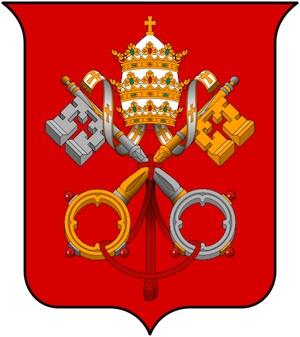House Of Savoy
Italy along with the rest of Europe does have a royal family or did. The rule of the House of Savoy ended with the 1946 referendum by which Italians chose the republic as the form of state thus officially ending feudalism in Italy. Their is an effort to normalize the relations with the former Royal family and allow them to perform a non-official and non-governmental public role which they already do in relation to the undoing the mechanisms of supression by developing and raising the consciousness of the Italian people and defending the standing of Italian people at home and around the world.
The Etruscan political system was a monarchy removed by the Romans until the Claudio-Julians ended the republic and implemented a monarchy. Fragmented and destroyed Europe after the empire leads to Charlemagne and away from Rome. The European royal families are all interbreeding to help furnish a European wide grip on power. Similarly the position of Pontifex Maximus was the religious head of Ancient Rome, unified by Julius Caesar as he sought to consolidate concentrate all power into unto himself. After the fall of the empire Vae victis and the art of defence is lost on Pontifex Maximus who is aghast at all things. Historically it shifts from a political position to a religious position depending on the character of the pope.
Italian Royal Palaces
- Palace of Caserta: residence of the King of the Two Sicilies
- Royal Palace (Naples): residence of the King of the Two Sicilies
- Museo di Capodimonte: residence of the King of the Two Sicilies
- Palazzo dei Normanni: residence of the King of Sicily
- Residences of the Royal House of Savoy: residences of the King of Italy
- Palazzo Ducale di Mantova: residence of the Duke of Mantua
- Palazzo Pitti: residence of the Grandduke of Tuscany
- Castle of Racconigi: residence of the Carignano line of the House of Savoy
These are the name of the Sovereign Houses of Italy
- House of Savoy: Kings of Italy, Kings of Sardinia, Dukes of Savoy, Princes of Piedmont
- House of Este: Dukes of Ferrara, Modena and Reggio, counts of Polesine and Garfagnana
- House of Farnese: Dukes of Parma, Piacenza and Castro
- House of Bonaparte: King of Italy, King of Rome, King of Naples and Sicily, Emperor at the principality of Elba, Queen of Naples, Principi di Canino e di Musignano, Grand Duchess of Tuscany
- House of Bourbon: Kings of the Two Sicilies, Kings of Naples, Kings of Sicily, Dukes of Parma and Piacenza
- House of Medici: Grand Dukes of Tuscany
- House of Visconti: Dukes of Milan
- House of Sforza: Dukes of Milan
- House of Gonzaga: Dukes of Montferrat, Dukes of Mantua
 These are the names of the Papal Houses of Italy
These are the names of the Papal Houses of Italy
- House of Barberini
- House of Borghese
- House of Borgia
- House of Borromeo
- House of Chigi
- House of Colonna
- House of Mattei
- House of Orsini
- House of Pamphili (later Doria-Pamphili-Landi)
